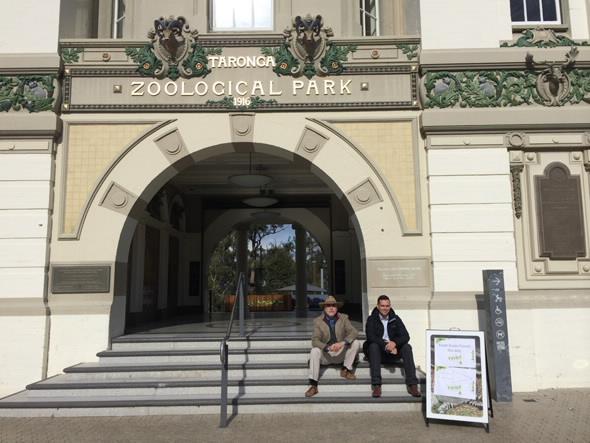

Published on the 5th June 2015 by ANSTO Staff
Two ANSTO scientists with a passion for the environment are joining other presenters at the Youth Enviro Forum to be held at Taronga Zoo on World Environment Day today. The event has been supported by the Botany Bay Environmental Education Centre, which promotes ANSTO’s Citizen Science Plastic Project.

Professor Richard Banati is an internationally recognised biomedical scientist who heads the bioanalytics capability in the LifeSciences Division and the ANSTO Plastics Project.
He said bioanalytical observations were changing perceptions about how the increased degradability of a material, such as plastic, may help to reduce the litter problem but could also cause a contamination problem in the future. Banati has used nuclear bioanalytical techniques to study bird feathers to measure and accurately track how certain elements, such as heavy metals contained in plastics, behave as they move through a biosphere.
Dr Tom Cresswell is an Isotope Ecologist at the Institute for Environmental Research (IER) using radioactive and stable isotopes as tracers of ecological processes within the aquatic environment. He has recently studied metal and radionuclide bioaccumulation by a range of freshwater and marine invertebrates.
Creswell and Banati are presenting to high school students at Taronga Zoo as part of the Workshops section of the program between 11:30am and 1:10pm. More than 220 kids from 30 schools across Sydney are attending the forum.
Both scientists will share examples of recent projects and the technologies used to gain information.
“Understanding the life cycle of a material more comprehensively is necessary because we would like to arrive at genuinely sustainable solutions and not merely a shifting of the problem that might then become even more challenging. I can’t think of a better way to spend World Environment Day than sharing important environmental information and helping to develop critical thinking,“ said Banati.
“When you give students the opportunity to not only see the impact of science for themselves but to be involved as citizen scientists, it can lead to an interest in science and a commitment to protecting the environment,” said Creswell.
ANSTO’s research is used to solve the puzzle of how environment systems function and interact, and the impact humans have on the environment. LifeSciences research and nuclear medicines produced by ANSTO are used to improve human health.
The ANSTO Plastics Project is a chance to get involved in ANSTO’s environmental research, and learn more about the effects plastic litter can have on our beaches, waterways and marine wildlife. When you join the ANSTO Plastics Project you'll become a citizen scientist, and by collecting plastic litter from local beaches and waterways you’ll help ANSTO scientists with their environmental research.